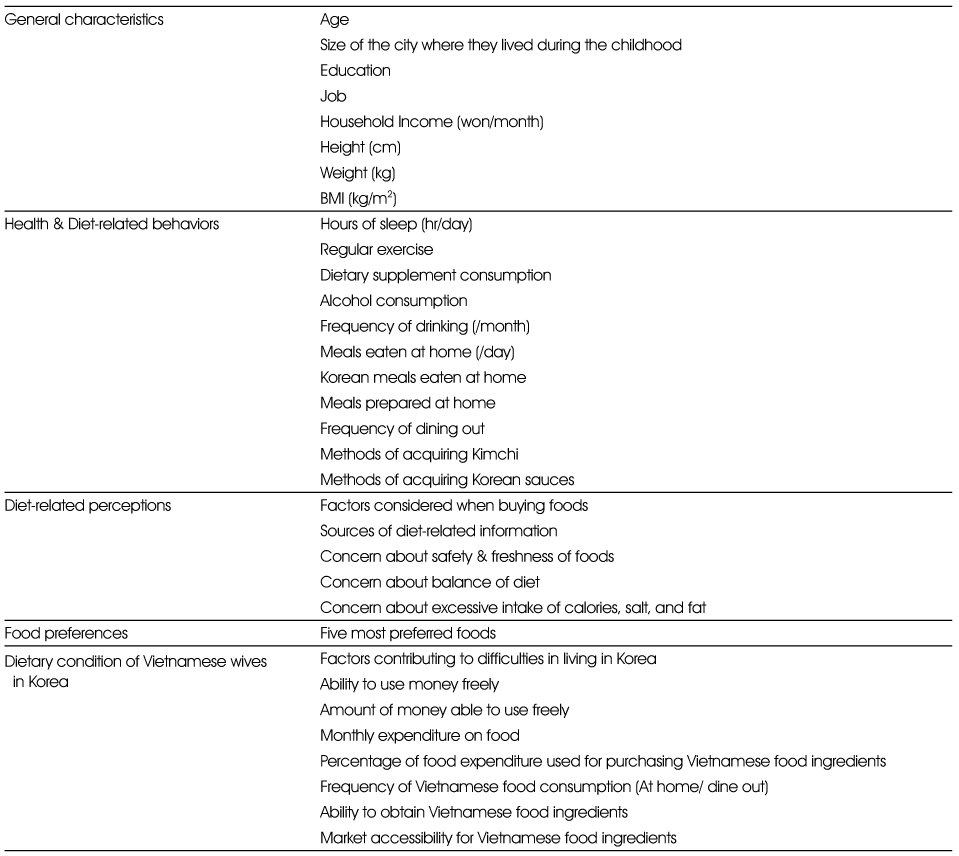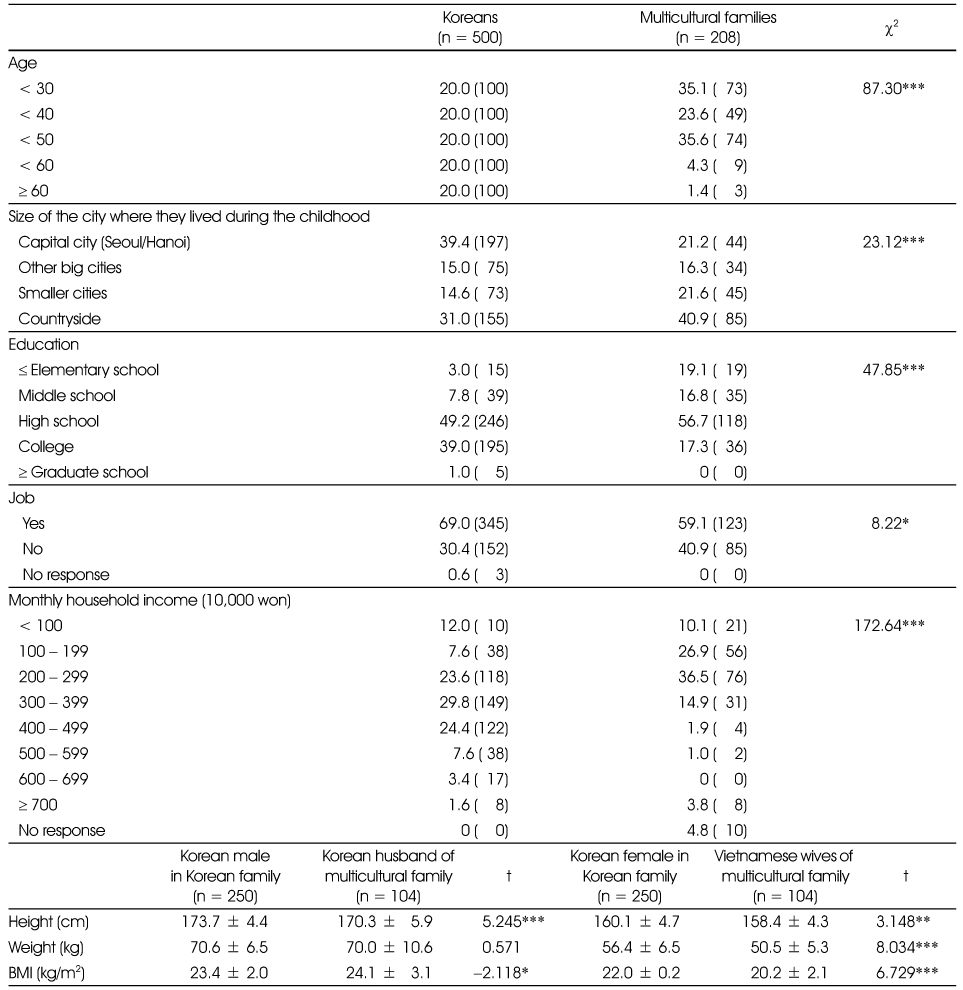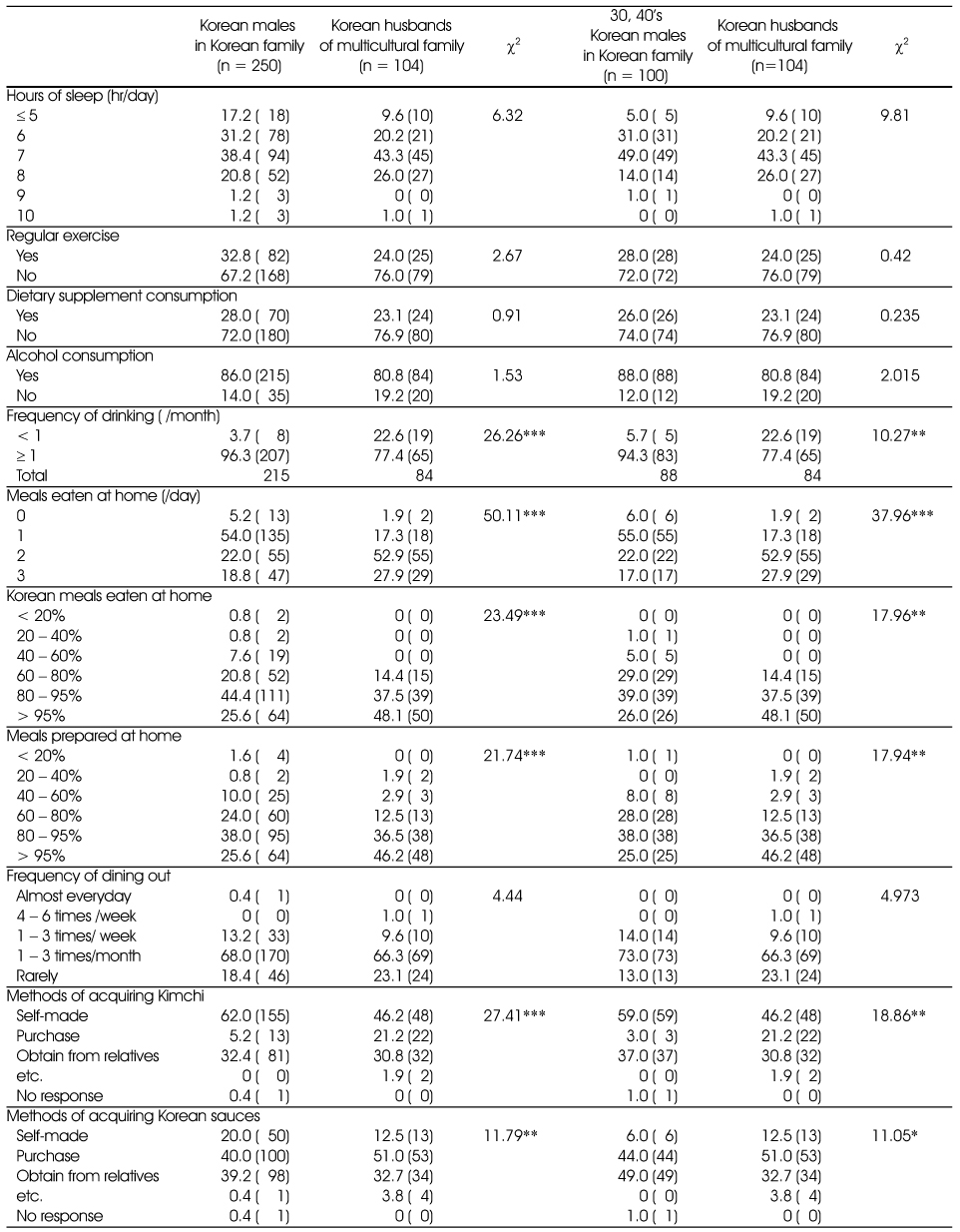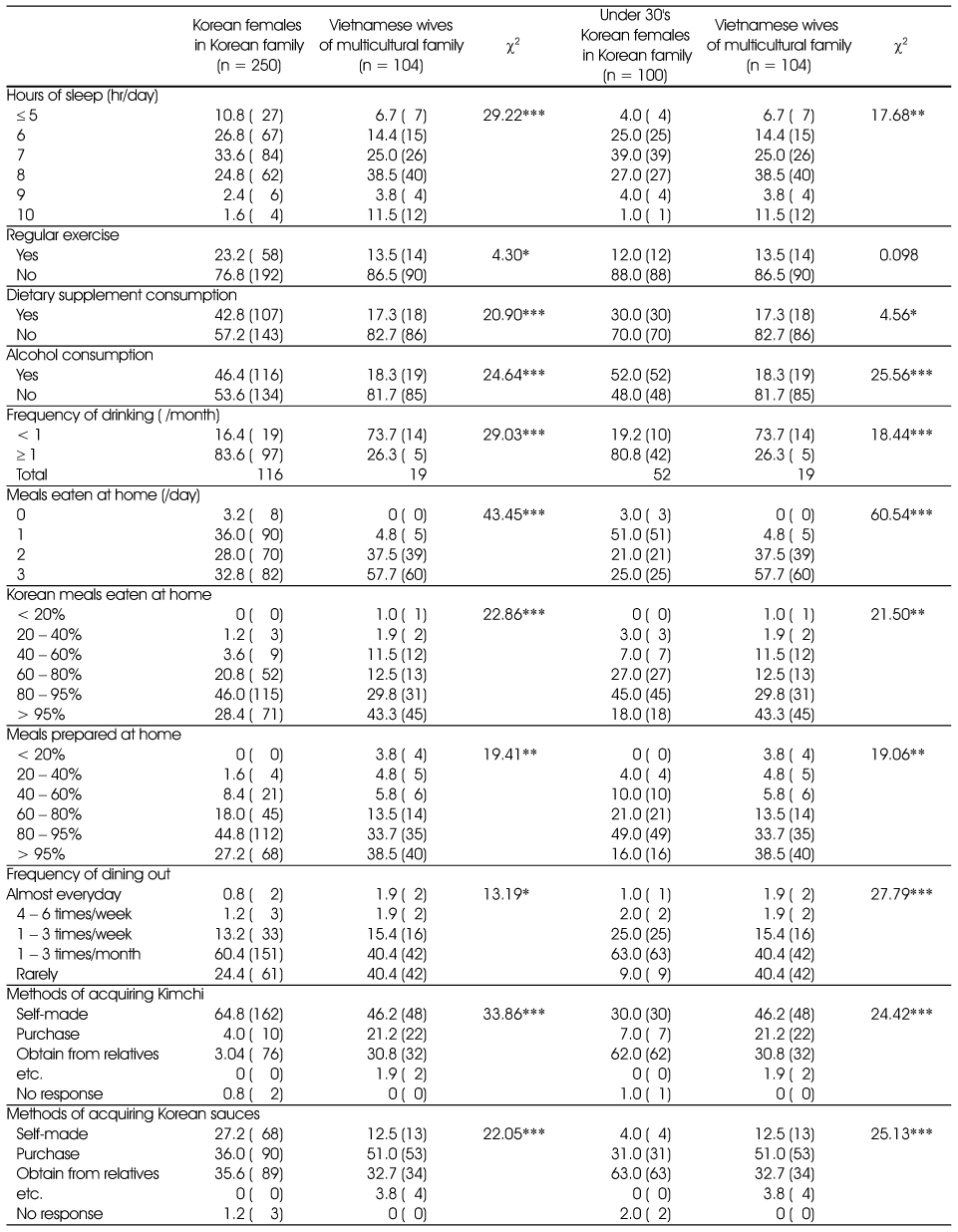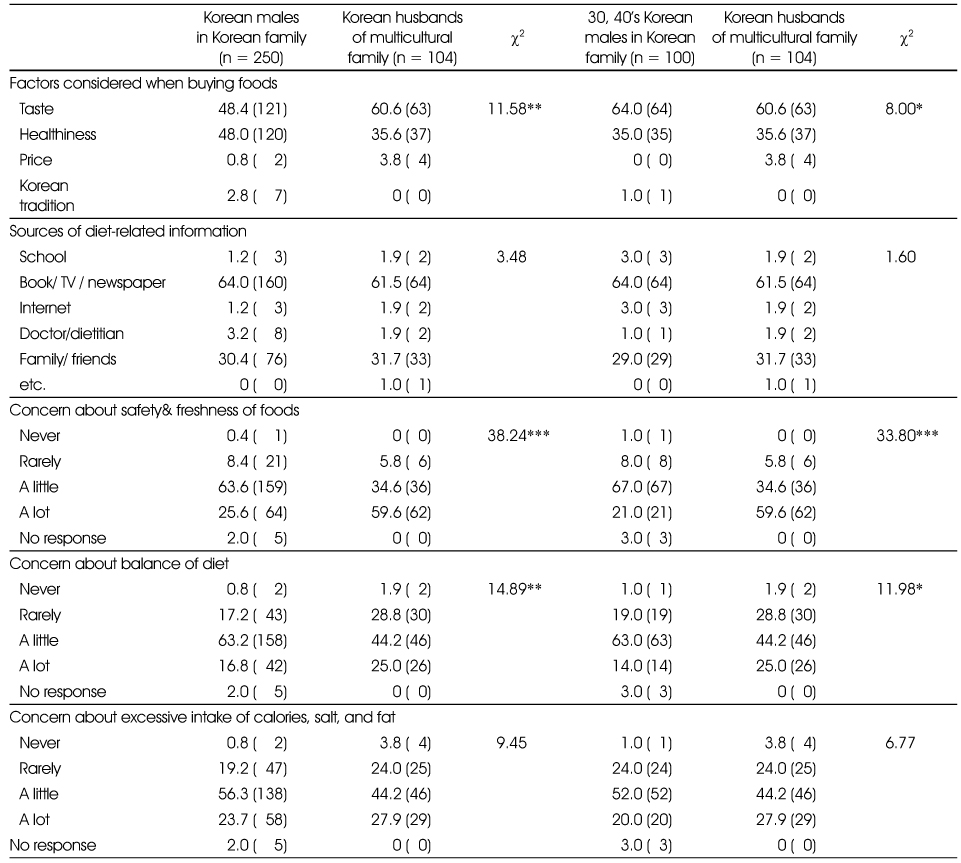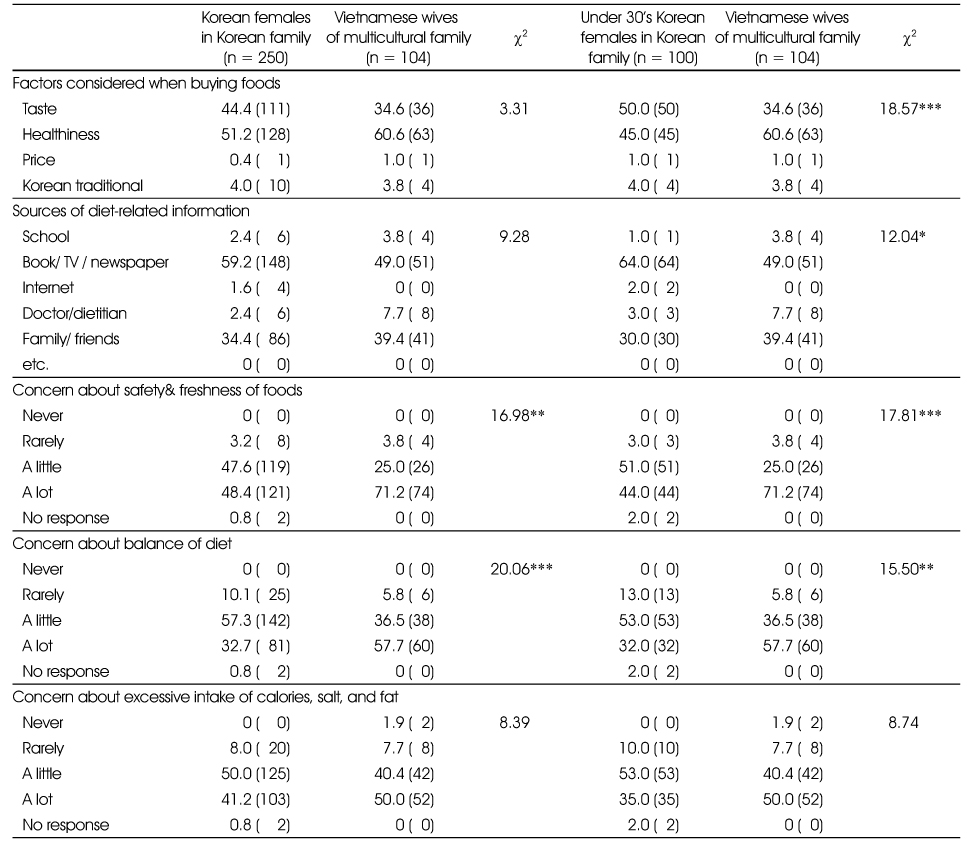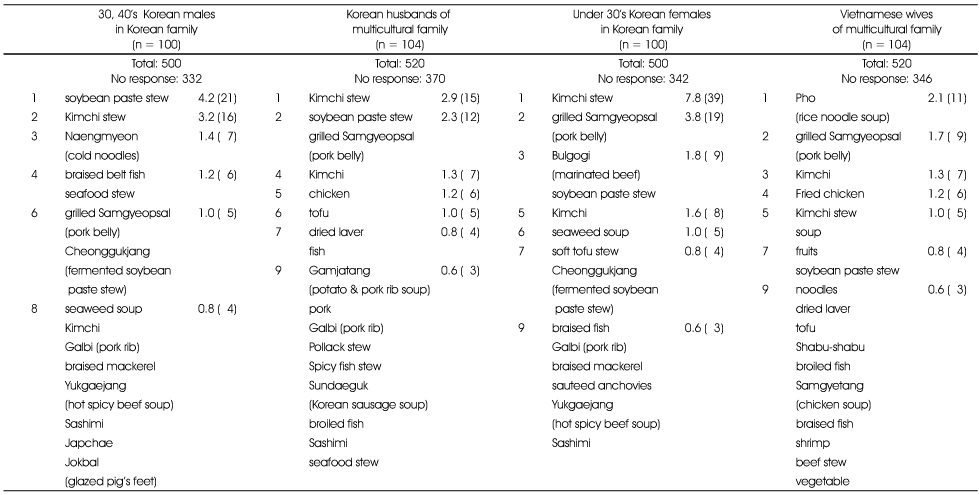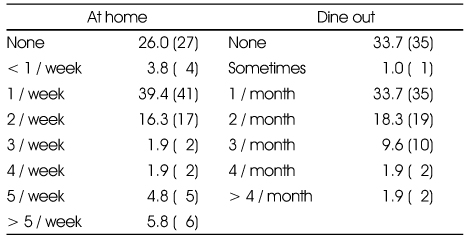References
1. Cho YA. A study on evaluation of food behavior and nutritional risks of Vietnamese female immigrants in Korea 2010. Kyung Hee University; 50–53.
Dissertation.
2. Choi JH, Lee GI. The study on the changes and prospects of food consumption pattern 1995. Seoul: Korea Rural Economic Institute; 19–39.
3. Chung ES. The effect of demographic characteristics on food expenditure pattern of urban household. Nonghyup Monthly Report 2004. 5571–18.
4. Hanh TTM, Komatsu T, Hung NT, Chuyen VN, Yoshimura Y, Tien PG, Yamamoto S. Nutritional status of middle-aged Vietnamese in Ho Chi Minh city. J Am Coll Nutr 2001. 20(6)616–622.
5. He J, Klag MJ, Wu Z. Effect of immigration and related environmental changes on serum lipid levels in southwestern Chinese men. Am J Epidemiol 1996. 144(9)839–849.
6. Iso H, Aaron RF, Kenneth K. Hemostatic variables in Japanese and Causian men. Plasma fibrinogen, factor VIIc, factor VIIIc, and von Willebrand factor and their relations to cardiovascular disease risk factors. Am J Epidemiol 1989. 130(5)925–934.
7. Huang B, Rodriguez BL, Burchfiel CM, Chyou PH, Curb JD, Yano K. Acculturation and prevalence of diabetes among Japanese-American men in Hawaii. Am J Epidemiol 1996. 144(7)674–681.
8. Hwang JY, Lee SE, Kim SH, Chung HW, Kim WY. Psychological distress is associated with inadequate dietary intake in Vietnamese marriage immigrant women in Korea. J Am Diet Assoc 2010. 110(5)779–785.
9. Kim BR. The status of international marriage immigration and adaptation to Korean society of immigrants 2008. Sogang University; 34–35.
Dissertation.
10. Kim JM, Lee NH. Analysis of the dietary life of immigrant women from multicultural families in the Daegu area. J Korean Diet Assoc 2009. 15(4)405–418.
11. Kim KH. Effect of a food-related lifestyle on the consumption and satisfaction with Korean foods, and intention to revisit. J Korea Contents Assoc 2010. 10(8)370–380.
12. Kim MS. Food away from home expenditure of the urban household : Effect of wive's employment 1998. Seoul National University; 10–18.
Dissertation.
13. Kim SH, Kim WY, Lyu JE, Chung HW, Hwang JY. Dietary intakes and eating behaviors of Vietnamese female immigrants to Korea through marriage and Korean spouses and correlations of their diets. Korean J Community Nutr 2009. 14(1)22–30.
14. Korea Immigration Service. The statistics of marriage immigrants 2011. cited 2012 April 14. Available from
http://www.immigration.go.kr.
15. Korean Educational Development Institute. Korean Education at a Glance (KEAG) 2008. cited 2012 September 21. Available from
http://cesi.kedi.re.kr.
16. Lyu JE. Dietary characteristics of Vietnamese female marriage immigrants in Korea 2008. Ewha Womens University; 51–61.
Dissertation.
17. Lyu JE, Yang YJ, Lee SE, Chung HW, Kim MK, Kim WY. Nutritional status of Vietnamese female marriage immigrants to Korea in relation to length of residence in Korea. Ann Nutr Metab 2009. 55317–324.
18. Ministry of Health & Welfare and Family Affairs. National survey on multicultural families 2009. cited 2012 September 21. Available from
http://www.mw.go.kr.
19. Park HR, Lee KY, Ryu JS. Analysis of food consumption patterns by income levels using annual report on the family income and expenditure survey. Korean J Community Nutr 1997. 2(4)633–646.
20. Parrish JB. Implication of changing food habits for nutrition educators. J Nutr Educ 1971. 2(4)140–146.
21. Raberg Kjollesdal MK, Holmboe-Ottesen G, Wandel M. Associations between food patterns, socioeconomic position and working situation among adult, working women and men in Oslo. Eur J Clin Nutr 2010. 64(10)1150–1157.
22. Statistics Korea. Household income & expenditure trends in the first quarter 2011 2011. cited 2012 September 21. Available from
http://kostat.go.kr.
23. Turrell G, Kavanagh AM. Socio-economic pathways to diet: modelling the association between socio-economic position and food purchasing behavior. Public Health Nutr 2006. 9(3)375–383.
24. Yang EJ, Chung HK, Kim WY, Bianchi L, Song WO. Chronic diseases and dietary changes in relation to Korean American's length of residence in the United States. J Am Diet Assoc 2007. 107(6)942–950.
25. Yang W, Read M. Dietary pattern changes of Asian immigrants. Nutr Res 1996. 16(8)1277–1293.
